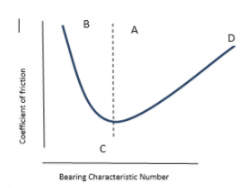Mechanical Engineering Exam > Mechanical Engineering Tests > Test: Hydrodynamics Bearing - Mechanical Engineering MCQ
Test: Hydrodynamics Bearing - Mechanical Engineering MCQ
Test Description
9 Questions MCQ Test - Test: Hydrodynamics Bearing
Test: Hydrodynamics Bearing for Mechanical Engineering 2025 is part of Mechanical Engineering preparation. The Test: Hydrodynamics Bearing questions and answers have been prepared
according to the Mechanical Engineering exam syllabus.The Test: Hydrodynamics Bearing MCQs are made for Mechanical Engineering 2025 Exam.
Find important definitions, questions, notes, meanings, examples, exercises, MCQs and online tests for Test: Hydrodynamics Bearing below.
Solutions of Test: Hydrodynamics Bearing questions in English are available as part of our course for Mechanical Engineering & Test: Hydrodynamics Bearing solutions in
Hindi for Mechanical Engineering course.
Download more important topics, notes, lectures and mock test series for Mechanical Engineering Exam by signing up for free. Attempt Test: Hydrodynamics Bearing | 9 questions in 20 minutes | Mock test for Mechanical Engineering preparation | Free important questions MCQ to study for Mechanical Engineering Exam | Download free PDF with solutions
Test: Hydrodynamics Bearing - Question 1

The bearing characteristic number shown in the graph is directly proportional to the unit bearing pressure.
Detailed Solution for Test: Hydrodynamics Bearing - Question 1
Test: Hydrodynamics Bearing - Question 2
In the graph shown, which regions points the partial metal to metal contact.
Detailed Solution for Test: Hydrodynamics Bearing - Question 2
Detailed Solution for Test: Hydrodynamics Bearing - Question 3
Detailed Solution for Test: Hydrodynamics Bearing - Question 4
Test: Hydrodynamics Bearing - Question 5
Bearing modulus is the bearing characteristic number at
Detailed Solution for Test: Hydrodynamics Bearing - Question 5
Test: Hydrodynamics Bearing - Question 6
If viscosity of the lubricant is very low than BCN will lie in the region
Detailed Solution for Test: Hydrodynamics Bearing - Question 6
Test: Hydrodynamics Bearing - Question 7
The fundamental equation for viscous flow is given by ∆pbhᵌ/6µl where symbols have their usual meanings.
Detailed Solution for Test: Hydrodynamics Bearing - Question 7
Test: Hydrodynamics Bearing - Question 8
A single transverse weld is preferred over double transverse fillet weld.
Detailed Solution for Test: Hydrodynamics Bearing - Question 8
Test: Hydrodynamics Bearing - Question 9
Transverse fillet weld can be designed using the same equations as of parallel fillet weld.
Detailed Solution for Test: Hydrodynamics Bearing - Question 9
Information about Test: Hydrodynamics Bearing Page
In this test you can find the Exam questions for Test: Hydrodynamics Bearing solved & explained in the simplest way possible.
Besides giving Questions and answers for Test: Hydrodynamics Bearing, EduRev gives you an ample number of Online tests for practice
Download as PDF



















